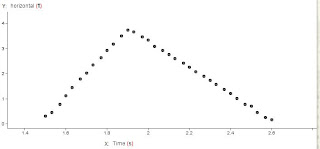We hear so much about collaboration with teachers in our building, comparing test scores, etc but really only scratch the surface of what could be if more teachers explored the use of Twitter for exactly the same purposes. Having a first draft of a video completed for the activity, I put together some questions and a tentative progression and posted a link requesting feedback from others before moving forward.
A direction I'm wanting to go in this next year is following Dan Meyer's 3-Act format with more lessons in my classroom, so in my tweet I mentioned him as an influence in my planning. I then went and got some lunch. An hour later I had rich comments in my document, one of which was from Dan himself giving me a great idea for a 'hook' in getting students interested in the work. ( I was fortunate to attend a breakout session this spring where Dan led Minnesota math educators in a class type setting going through such an activity.) In addition to Dan's comment, I had Casey Rutherford, a physics teacher, giving some great perspective on what he sees in his classroom as well as some content specific help. This is the interdisciplinary work I always heard about in college (and never saw in reality).
After the feedback, I went to work editing the next version of the video and activity questions-- taking a slightly different direction, I am very pleased with the progress I've made since then and more focus that was brought to this lesson thanks to the help of others (although I'm still open to suggestions at this point as well).
I've connected a data set (via a goo.gl link displayed at the end of the video) for students to explore the actual data and make connections and their own conclusions of what will happen.
Unhappy with the idea of them needing to manually enter each value into a calculator, I looked into Geogebra's web app and found a spreadsheet function that allows myself or students to paste columns of data from the Google spreadsheet right into it. What's really nice is I can select specific cell areas and only analyze those parts of the data (like the flight of the ball toward the wall, but not after it bounces up higher which has some great applications for students in understanding behaviors of the graph in looking at its table form).
A takeaway I hope for this lesson is students having a better understanding that the projectile motion model is based on vertical position of a flying object and not its position in space.
Here are some screen-shots taken from using the data in Geogebra:

 |
| Horizontal vs. Vertical Position |
 |
| Time vs. Vertical Position |
 |
| Time vs. Horizontal Position |

No comments:
Post a Comment